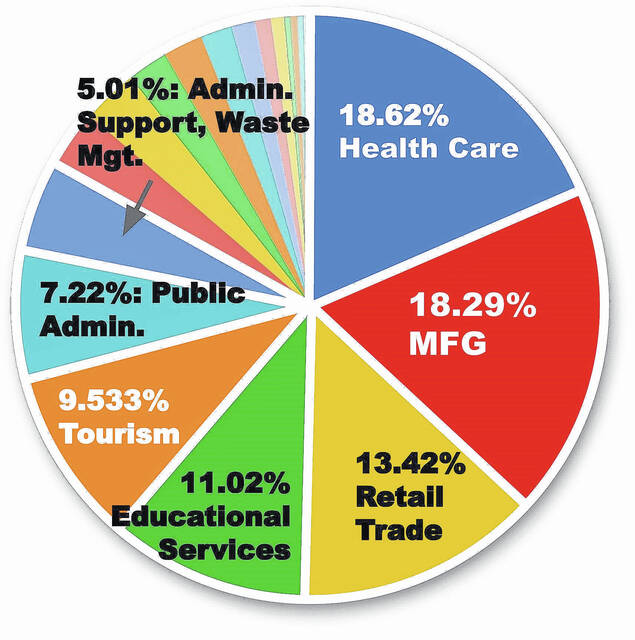
Industry sectors employing fewer than 5% include Agriculture, Forestry, Fishing and Hunting, 4.90%; Construction 2.27%; Wholesale Trade, 1.48%; Professional, Scientific, and Technical Services, 1.25%; Other Services (except Public Administration), 0.99%; Finance and Insurance, 0.63%; Arts, Entertainment, and Recreation, 0.37%; Real Estate and Rental and Leasing, 0.22%.
ELIZABETHTOWN — Jobs in the Manufacturing sector comprised nearly half (47.9%) of all jobs in Bladen County, according to the most recent Quarterly Census of Employment and Wages released this week by the North Carolina Department of Commerce.
Jobs in Public Administration, 6.76%; Retail Trade, 6.56%; Transportation/Warehousing, 6.28%, Health Care, 5.69%; and Administrative Support, 5.37%, rounded out the top five employment sectors in Bladen County, during the thrid quarter of 2022, the most recent data available from NCDC.
In Bladen County, the top three employers are commonly Manufacturing, Educational Services and Public Administration job sectors, but during the third quarter, the Education job sector fell to the number seven position, losing 202 jobs in the last three months.
The quarterly job report will be followed in the coming days by the monthly unemployment report, which in the last few months has shown a decrese in unemployment, indicating that jobs across all industry sectors are increasing and returning to pre pandemic levels. However, the December jobless rate stood at 4.3%, a level at which most employers consider full employment.
According to a report from Neil Harrington and Josh Levy, who write a blog for the Department of Commerce said statewide economic condidtions would continue to improve.
“By many measures, North Carolina’s economy performed well in 2022, placing the state on strong economic footing going into 2023. There were potential signs of cooling near the end of the year, but, overall, labor market and economic conditions remained strong. As LEAD continues to monitor the state’s labor market and economy this year, here are five indicators and trends we are paying especially close attention to in 2023,” Harrington and Levy reported in their blog report from Feb. 23.

